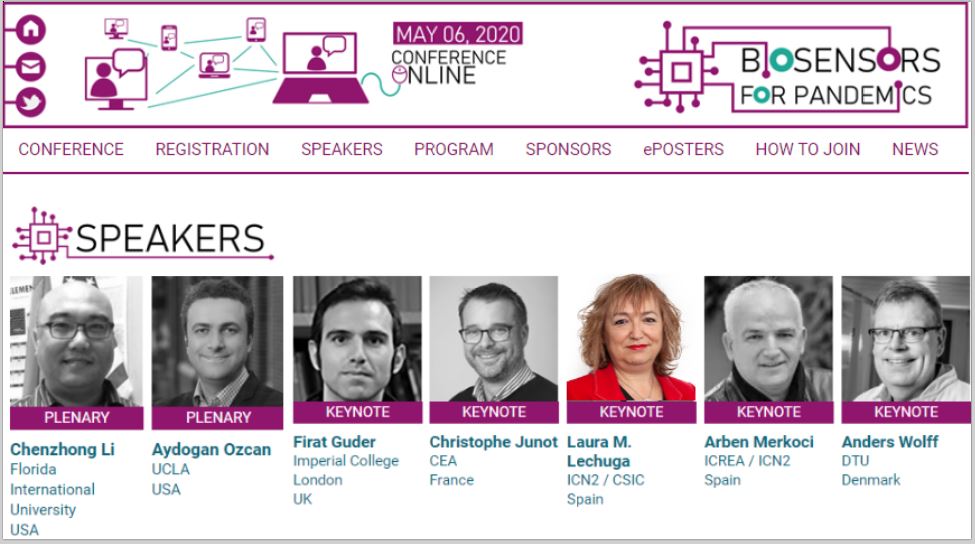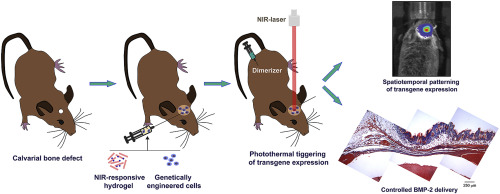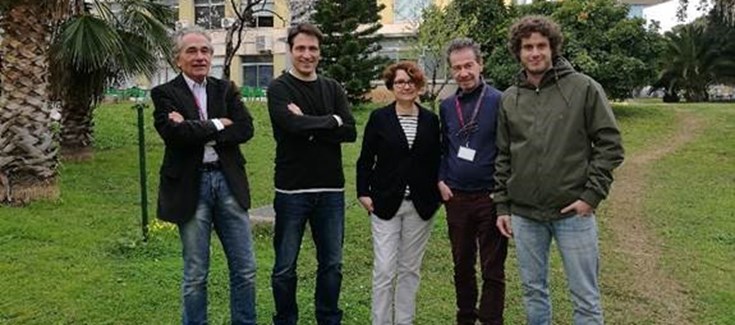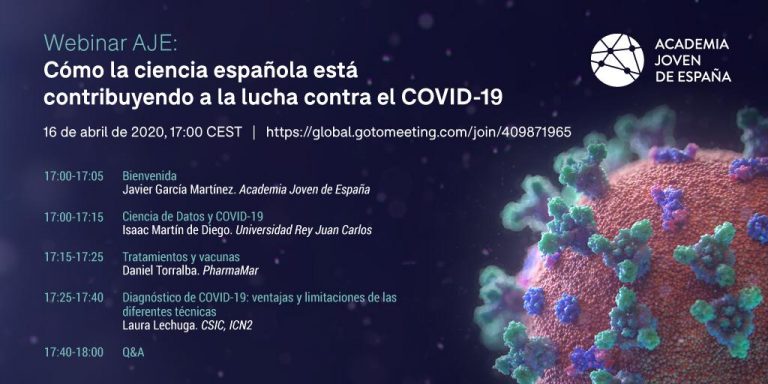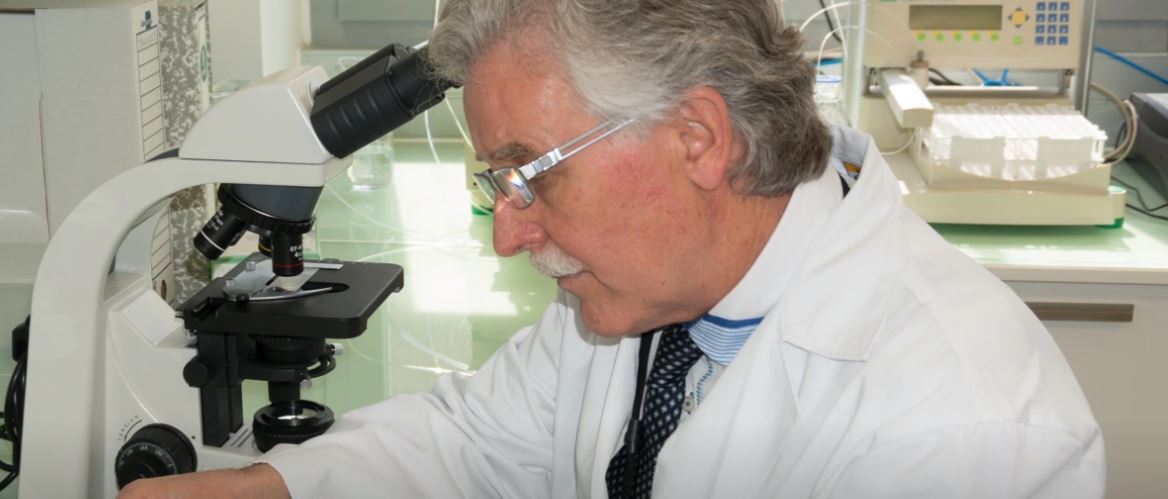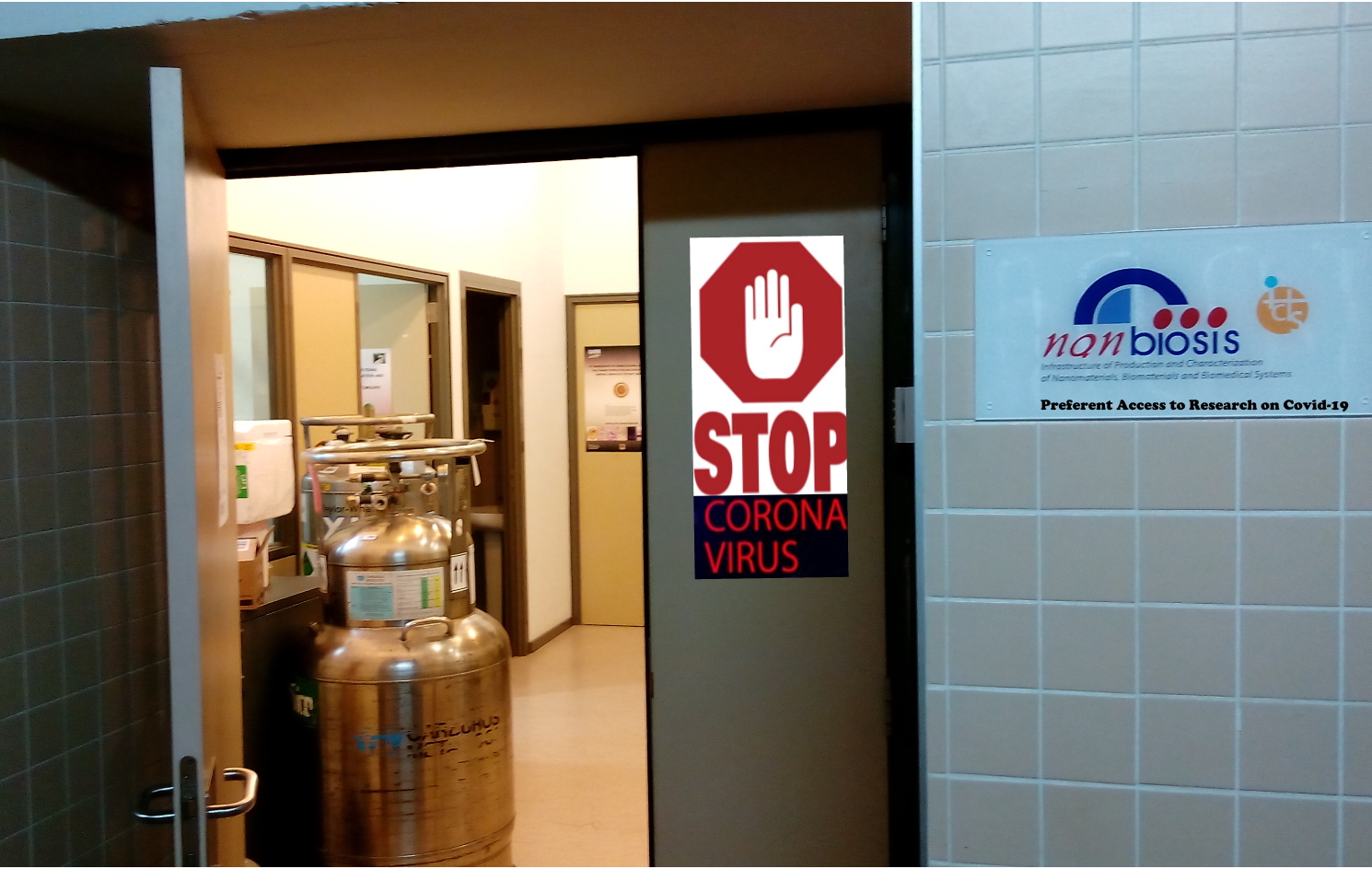Biosensors for Pandemics
Next 6 of May wii take place the On-line Conference Biosensors for Pandemics: Reliable and efficient nanotech-based diagnostics in emergency situations, will gather worldwide well known experts in biosensing technologies currently working in COVID-19 diagnostics or having very relevant technologies in the field.
Prof. Laura Lechuga, Scientific Director of NANBIOSIS U4 Biodeposition and Biodetection Unit of CIBER-BBN and ICN2-CSIC, will be one of the speakers. Laura Lechuga is coordinating the European proyect CONVAT: advanced nanobiosensing platforms for point-of-care diagnostics and surveillance of coronavirus for rapid diagnosis and monitoring of COVID ー 19,
Deadlines:
Abstract Submission (ePoster request): April 22, 2020
Author Submission Acceptance Notification: April 24, 2020
Flash Poster Acceptance Notification: April 24, 2020
Early Bird Registration Fee: April 24, 2020
